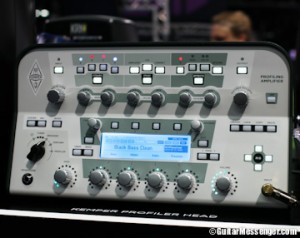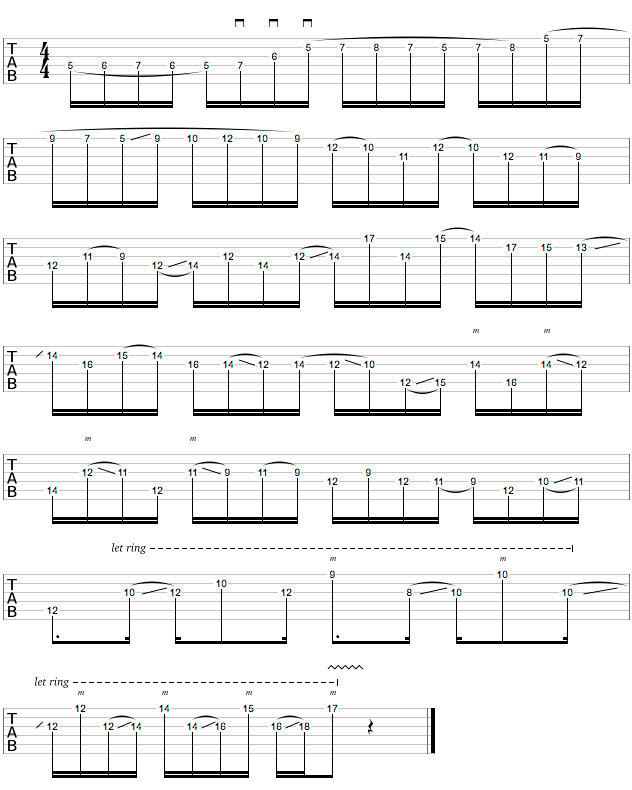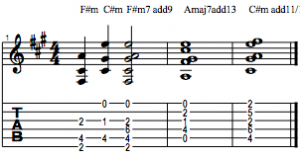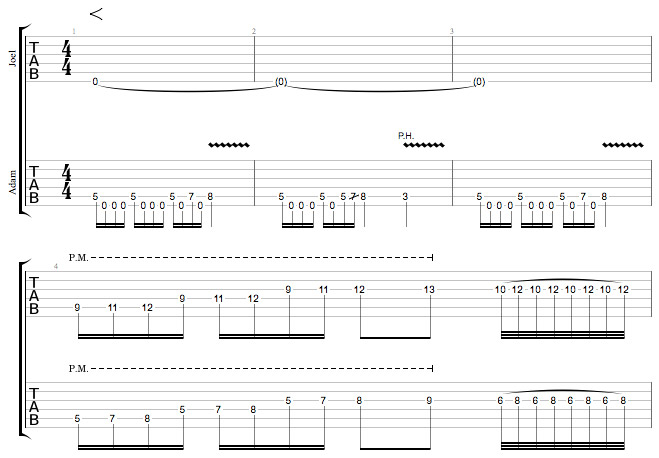The Altered Scale. Sound scary? Well it is. It’s a 20 story tall, fire-breathing beast with enough tension in it to break the entire universe into infinite little pieces and eat them all in one bite. But that’s why it’s so great. If you learn to tame this beast it can add a hip, sophisticated, and wild edge to your playing, and is relevant beyond the scope of Jazz music alone. And it’s actually not that hard once you get used to it.
The altered scale came about in the Bebop era of Jazz when musicians were exploring new harmonic frontiers and looking to add more tension to a V7 chord. The scale is based on a V7b5 chord with altered tensions. (Confused by “altered tensions?” I could do a whole article on this in the future.) The altered tensions are b9 (aka b2), #9 (#2 or b3), and b13 (b6). Put it all together and it looks like this: 1, b2, #2, 3, b5, b6, b7. The G altered scale would be spelled G, Ab, Bb, B, Db, Eb, F.
Example 1: The G altered scale in 2 octaves.

So with the altered scale comes the altered chord. Your basic voicings will have the guide tones (3 and b7) with one or more of the tensions (and/or b5) on top and a root on the bottom if it doesn’t protrude on the bass or piano player’s part. The altered chord is usually used as a V chord that moves to I major, i minor, or resolves deceptively.
Example 2 presents 4 altered chords with guide tones on the D and G strings, and altered tensions on the B and E strings. Each of these chords can be played with one or both of the tensions. Feel free to omit the root as well, seeing as that some of the chords are difficult to finger with it, and it is the least important note as a chord player in Jazz. When practicing I like to hit the root and then the chord so I can hear the voicing over the root. All of these voicings are represented by the symbol 7alt (eg G7alt).
Example 2: G7alt Chord Voicings
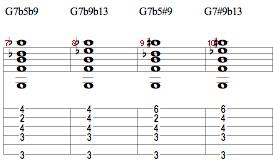
And finally, the fun part. Licks! The altered scale offers a wide world of wild licks to wield. Example 3a is a simple scalar lick over G7alt. Example 3b is a lick over Bb7alt and interestingly enough can also be played over a Bm6 chord. (Coincidence??? I think not. This technique is called “superimposing” – a huge part of jazz improvisation to be discussed in future lessons). 3c starts with a scalar passage in the 1st bar and then superimposes a rootless F minor Major 7(9) and Bb triad in the 2nd measure.
Example 3a:
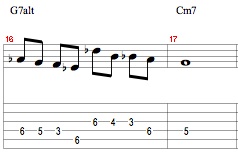
Example 3b:
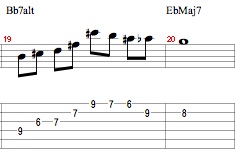
Example 3c:
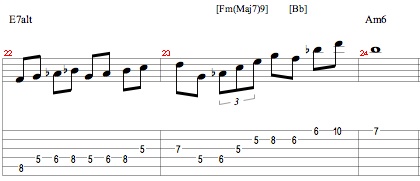
So now if I’ve done my job right, you have at least a vague understanding of the beast that is the altered scale. Conquer it and it will serve you well. I find this scale can sound pretty savage and demented in non Jazz contexts. Try it in a ripping solo or badass riff for a heavy rock or metal band. Feel free to stick it anywhere you think it’ll fit.










